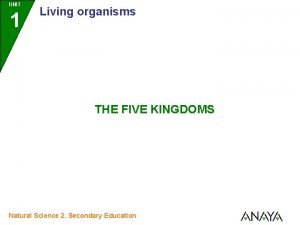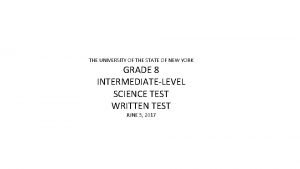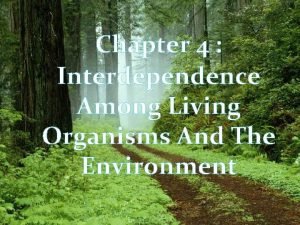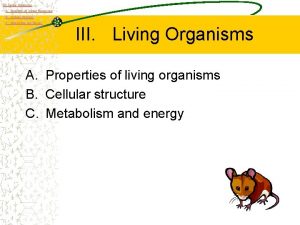Definition of species a group of living organisms








- Slides: 8


Definition of species: a group of living organisms consisting of similar individuals capable of exchanging genes or interbreeding. The species is the principal natural taxonomic unit, ranking below a genus and denoted by a Latin binomial, e. g. Homo sapiens.

Sub Species In biological classification the term subspecies refers to a unity of populations of a species living in a subdivision of the species' global range and varies from other populations of the same species by morphological characteristics. A subspecies cannot be recognized independently. A species is either recognized as having no subspecies at all or at least two, including any that are extinct. The term is abbreviated subsp. The plural is the same as the singular: subspecies. In zoology, under the International Code of Zoological Nomenclature the subspecies is the only taxonomic rank below that of species that can receive a name. In botany and mycology, under the International Code of Nomenclature for algae, fungi, and plants other infraspecific ranks such as variety, may be named. In bacteriology and virology, under standard bacterial nomenclature and virus nomenclature, there are recommendations but not strict requirements for recognizing other important infraspecific ranks.

Panthera tigris sondaica Panthera tigris

Sibling species sibling species. Any of two or more related species that are morphologically identical but are incapable of producing fertile hybrids. Sibling species can only be identified by genetic, biochemical, behavioral, or ecological factors, and are thought to have become divergent very recently.

A ring species is a connected series of neighboring populations, each of which can sexually interbreed with adjacent related populations, but for which there exist at least two "end" populations in the series, which are too distantly related to interbreed, though there is a potential gene flow between each "linked" population. Such non-breeding, though genetically connected, "end" populations may co-exist in the same region thus closing the ring. Ring species thus present a difficulty for any species concept that relies on reproductive isolation. However, ring species are at best rare. Eg. Ensatina eschscholtzii


In biological terms, rather than in relation to nomenclature, a polytypic species has two or more genetically and phenotypically divergent subspecies, races, or more generally speaking, populations that need a separate description. These are separate groups that are clearly distinct from one another and do not generally interbreed, although there may be a relatively narrow hybridization zone, but which may interbreed if given the chance to do so. These subspecies, races, or populations, can be named as subspecies by zoologists, or in more varied ways by botanists and microbiologists.















